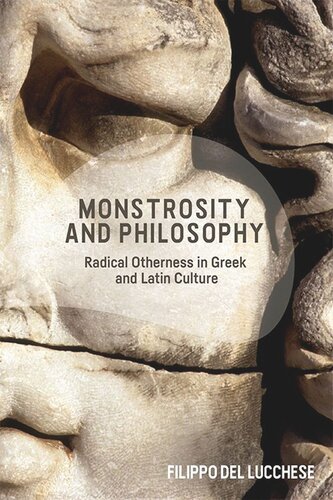

Most ebook files are in PDF format, so you can easily read them using various software such as Foxit Reader or directly on the Google Chrome browser.
Some ebook files are released by publishers in other formats such as .awz, .mobi, .epub, .fb2, etc. You may need to install specific software to read these formats on mobile/PC, such as Calibre.
Please read the tutorial at this link: https://ebookbell.com/faq
We offer FREE conversion to the popular formats you request; however, this may take some time. Therefore, right after payment, please email us, and we will try to provide the service as quickly as possible.
For some exceptional file formats or broken links (if any), please refrain from opening any disputes. Instead, email us first, and we will try to assist within a maximum of 6 hours.
EbookBell Team

4.0
76 reviewsAmazons and giants, snakes and gorgons, centaurs and gryphons: monsters abounded in ancient culture. They raise enduring philosophical questions: about chaos and order; about divinity and perversion; about meaning and purpose; about the hierarchy of nature or its absence. Del Lucchese grapples with the concept of monstrosity, showing how ancient philosophers explored metaphysics, ontology, theology and politics to respond to the challenge of radical otherness in nature and in thought.
Each chapter explores the emergence of monstrosity in a set of authors and theories. In chapter 1, monsters rise as the challenging adversaries of the new gods of the early cosmogonies. But they can also be powerful productive forces that support building the new order or ambiguous characters that catalyse the unfolding of the tragic universe. In chapter 2, the Pre-Platonic systems of Anaxagoras, Empedocle and Democritus pave the way for the recognition of the philosophical status of monstrosity.
This status becomes central in Attic philosophy, first with Plato’s mythological monstrosities and then with the construction of a hierarchical structure of the universe – taken up in chapter 3. Chapter 4 focuses on Aristotle’s study of physical monstrosity and its role within his metaphysical and aetiological framework.
Chapters 5–7 deal with the extraordinarily elaborate responses to Attic philosophy by the major Hellenistic systems: Epicureanism, Stoicism and Scepticism. The final chapter looks at the Middle and Neoplatonist response to Hellenism and explores the richness of late-antiquity’s reflection on monstrosity up to its absorption and reworking by early Christian thought.